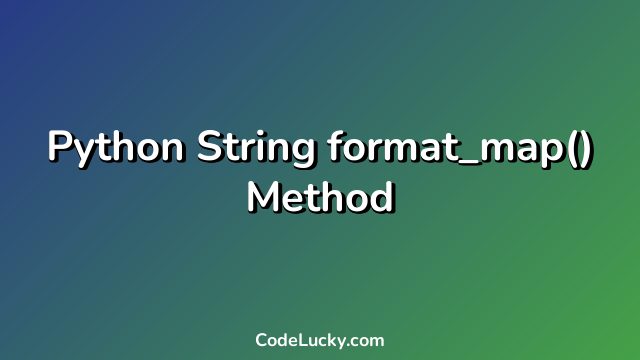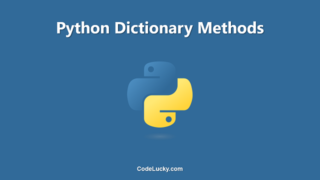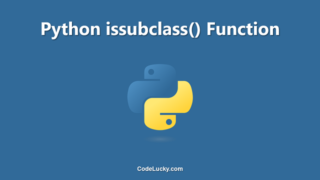The format_map() method is a built-in method in Python that formats a string using a mapping object. It returns a formatted string where placeholders are replaced with the values from the mapping object.
Syntax
The syntax of the format_map() method is as follows:
string.format_map(mapping)
Here, string is the string to be formatted, and mapping is the mapping object that provides the values for the placeholders in the string. The mapping object can be a dictionary, a subclass of the dict class, or an object that implements the __getitem__() method.
Return Value
The format_map() method returns a formatted string where placeholders are replaced with the values from the mapping object.
Examples
Here are three different examples of how to use the format_map() method in Python:
Example 1: Formatting a String with a Dictionary
The following example demonstrates how to use the format_map() method to format a string using a dictionary:
person = {'name': 'John', 'age': 30}
string = 'My name is {name} and I am {age} years old.'
result = string.format_map(person)
print(result)
Output:
My name is John and I am 30 years old.
In this example, we define a dictionary that contains the values for the placeholders in the string. We then use the format_map() method to format the string using the values from the dictionary.
Example 2: Formatting a String with a Class
The following example demonstrates how to use the format_map() method to format a string using a class:
class Person:
def __init__(self, name, age):
self.name = name
self.age = age
person = Person('John', 30)
string = 'My name is {name} and I am {age} years old.'
result = string.format_map(vars(person))
print(result)
Output:
My name is John and I am 30 years old.
In this example, we define a class that represents a person. We then create an instance of the class with the values for the placeholders in the string. We use the vars() function to convert the object to a dictionary, and then use the format_map() method to format the string using the values from the dictionary.
Example 3: Formatting a String with a Subclass of the dict Class
The following example demonstrates how to use the format_map() method to format a string using a subclass of the dict class:
class PersonDict(dict):
def __missing__(self, key):
return key
person = PersonDict({'name': 'John', 'age': 30})
string = 'My name is {name} and I am {age} years old. My address is {address}.'
result = string.format_map(person)
print(result)
Output:
My name is John and I am 30 years old. My address is address.
In this example, we define a subclass of the dict class that returns the key when it is missing from the dictionary. We then create an instance of the subclass with the values for some of the placeholders in the string. We use the format_map() method to format the string using the values from the dictionary, and for the missing key, it returns the key itself.
Use Cases
The format_map() method is useful when you want to format a string using a mapping object, such as a dictionary, a subclass of the dict class, or an object that implements the __getitem__() method. It provides a convenient way to replace placeholders in a string with the corresponding values from the mapping object.
For example, you can use the format_map() method to:
- Format a string with values from a database query result
- Generate a report by formatting a string with data from an object
- Generate dynamic SQL queries by formatting a string with parameters
Overall, the format_map() method is a powerful tool that can simplify string formatting in Python.







